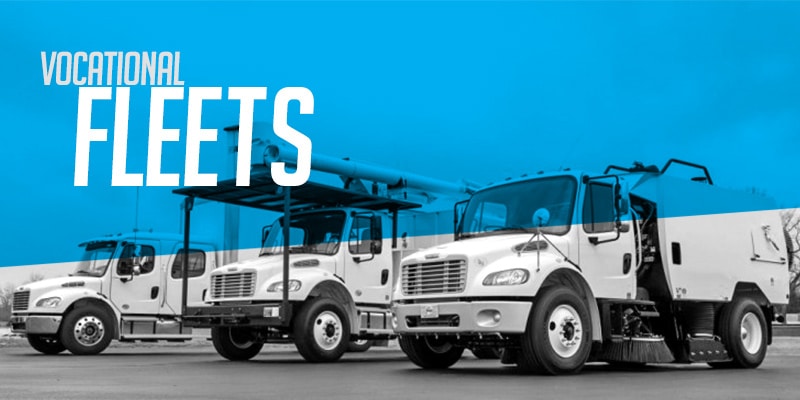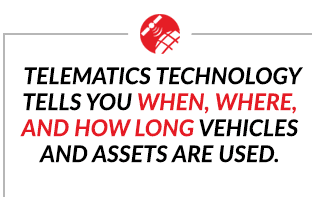Vocational Fleets Right-Sizing and Increasing Efficiency
Here’s How Using Telematics

At their core, vocational fleets are comprised of work trucks designed for specific jobs. Examples of vocational vehicles are dump trucks, garbage trucks, etc. It’s becoming more important for vocational fleets to utilize technology in their given fields for a few reasons.
First, it’s essential that vocational fleets have the capability to look up where their vehicles are at any given time quickly and efficiently.
Second, they need to be able to measure job efficiency i.e. how long vehicles/employees spend on a job site. Lastly, vocational fleets need to be able to measure fleet utilization – how often their vehicles and assets are used to increase efficiency and possibly right-size.
Here’s how vocational fleets are utilizing telematics technology to do just that.
Increasing Vocational Fleet Efficiency
Telematics technology is a powerful tool for vocational fleets to increase efficiency. One of the ways fleets can be more efficient with telematics software is identifying the right vehicle or asset for a job faster.  Not only does it waste time making calls to drivers in the field when trying to find the right vehicle or asset is for the next job (or last-minute service request), a vehicle could be inefficiently dispatched from across town when there were several others close by. Using telematics technology with real-time mapping and the ability to assign attributes to vocational vehicles and assets (dimensions of a box truck, weight limit of a trailer, etc.) helps fleets solve this challenge. So, if an organization’s next job requires a crane, snow plow, or bucket truck, they can quickly reference where the nearest one is to dispatch. This saves time by eliminating the guesswork and phone calls it takes to locate vehicles and assets without telematics technology.
Not only does it waste time making calls to drivers in the field when trying to find the right vehicle or asset is for the next job (or last-minute service request), a vehicle could be inefficiently dispatched from across town when there were several others close by. Using telematics technology with real-time mapping and the ability to assign attributes to vocational vehicles and assets (dimensions of a box truck, weight limit of a trailer, etc.) helps fleets solve this challenge. So, if an organization’s next job requires a crane, snow plow, or bucket truck, they can quickly reference where the nearest one is to dispatch. This saves time by eliminating the guesswork and phone calls it takes to locate vehicles and assets without telematics technology.
Completing jobs more proficiently is another way vocational fleets increase overall efficiency. By measuring time spent at a job site with telematics technology, they can achieve this goal. This data offers insight into how long it took for a job to get done and increase billing accuracy for their customers.
Right-Sizing Vocational Fleets with Telematics Technology
Without a telematics system in place, it’s hard for vocational fleets to know how often all of their vehicles and assets are utilized. Sometimes they know the favorites of the yard, but it’s possible for certain vehicles and assets to sit for long periods of time unnoticed. Telematics technology reveals this information and tells you exactly when, where, and how long vehicles and assets are used (or sitting in one place). This allows vocational fleets to right-size if needed to find the right operational mix. This aspect of telematics technology also saves time and money, including maintenance costs. When vehicles or assets are overutilized, they run down much faster and shortened life cycles.
Find the Right Fit
Using telematics and other types of technology will only become more important for vocational fleets in the future. If you are currently researching telematics companies, it’s important to keep certain considerations in mind so that you can find the right fit.





